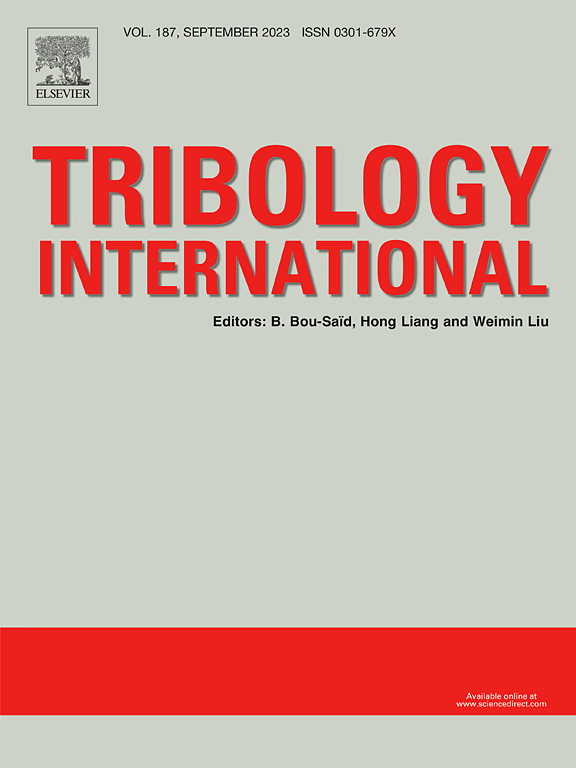Insights into structural changes during scratch deformation of ductile coating systems: Plastic flow, microstructural transformations, and crack development
IF 6.1
1区 工程技术
Q1 ENGINEERING, MECHANICAL
引用次数: 0
Abstract
This study investigates the structural changes occurring during the scratch deformation of ductile materials, focusing on a composite aluminum (Al) coating on a steel substrate fabricated using a solid-state aluminizing technique. By analyzing the results of the scratch test with transmission electron microscopy (TEM) and focused ion beam (FIB) techniques, the research provides a detailed examination of plastic flow, microstructural transformations, and crack development. Results demonstrate that strong adhesion at the interface and similar mechanical properties between steel and Al layers facilitate co-deformation, crucial for maintaining the integrity of the composite structure. The study features the formation of a rolling-like laminated structure and significant grain refinement in both the steel and Al components, driven by plastic deformation. Observed atomic-scale intermixing and the formation of an amorphous interlayer highlight extensive material interactions during deformation. The visualization of crack progression using FIB allows for an in-depth understanding of the fracture process. Subsurface cracks initiate within the thin Al interlayer and propagate toward the surface, evolving through the coalescence of nanopores into microvoids and larger cavities, ultimately leading to crack propagation. Secondary internal cracks may arise due to stress fields generated by the primary crack, contributing to a complex network of internal cracks.
洞察韧性涂层体系划痕变形过程中的结构变化:塑性流动、微结构转变和裂纹发展
本研究调查了韧性材料在划痕变形过程中发生的结构变化,重点是使用固态镀铝技术在钢基体上制造的复合铝涂层。通过使用透射电子显微镜(TEM)和聚焦离子束(FIB)技术分析划痕试验的结果,该研究详细考察了塑性流动、微结构转变和裂纹发展。研究结果表明,钢层和铝层之间在界面上的强粘附力和相似的机械性能促进了共同变形,这对保持复合材料结构的完整性至关重要。该研究的特点是在塑性变形的驱动下,钢和铝成分都形成了类似轧制的层状结构和显著的晶粒细化。观察到的原子尺度混杂和无定形夹层的形成凸显了变形过程中广泛的材料相互作用。利用 FIB 对裂纹发展过程进行可视化可深入了解断裂过程。次表层裂纹在薄铝夹层中产生,并向表面扩展,通过纳米孔的凝聚演变成微空洞和更大的空腔,最终导致裂纹扩展。次生内部裂纹可能会由于主裂纹产生的应力场而产生,从而形成复杂的内部裂纹网络。
本文章由计算机程序翻译,如有差异,请以英文原文为准。
求助全文
约1分钟内获得全文
求助全文
来源期刊

Tribology International
工程技术-工程:机械
CiteScore
10.10
自引率
16.10%
发文量
627
审稿时长
35 days
期刊介绍:
Tribology is the science of rubbing surfaces and contributes to every facet of our everyday life, from live cell friction to engine lubrication and seismology. As such tribology is truly multidisciplinary and this extraordinary breadth of scientific interest is reflected in the scope of Tribology International.
Tribology International seeks to publish original research papers of the highest scientific quality to provide an archival resource for scientists from all backgrounds. Written contributions are invited reporting experimental and modelling studies both in established areas of tribology and emerging fields. Scientific topics include the physics or chemistry of tribo-surfaces, bio-tribology, surface engineering and materials, contact mechanics, nano-tribology, lubricants and hydrodynamic lubrication.
 求助内容:
求助内容: 应助结果提醒方式:
应助结果提醒方式:


